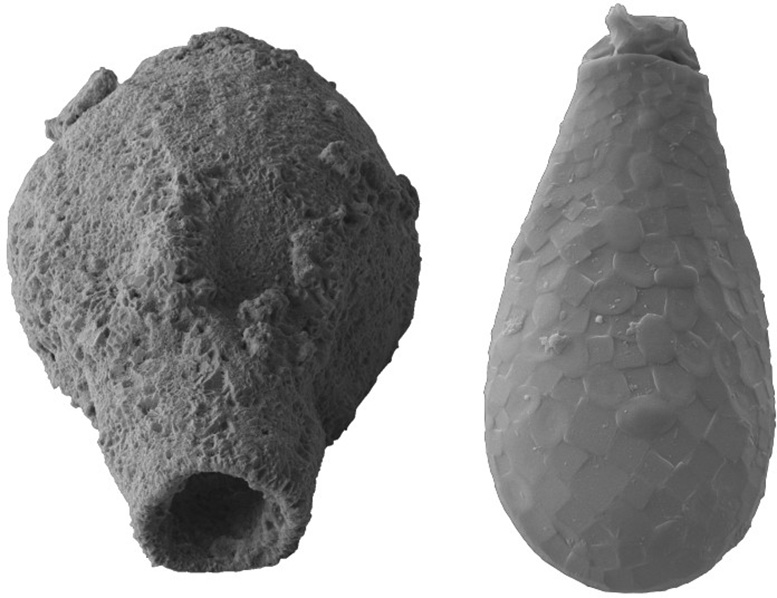

A recent study suggests that by the Neoproterozoic period, distinct lineages of amoebae, as well as the ancestors of plants, algae, and animals, had already emerged and managed to survive the two global glaciations that covered the planet.
Approximately 800 million years ago (mya), long before the formation of the supercontinent Pangea, Earth’s biodiversity was more varied than previously thought. Brazilian researchers, through the reconstruction of the evolutionary tree of life from ancient amoebas and the ancestors of algae, fungi, plants, and animals, have proposed a scenario where multiple distinct lineages of species coexisted during this era. Their findings are detailed in an article published in the Proceedings of the National Academy of Sciences of the United States of America (PNAS).
According to the literature, several lineages of eukaryotes that first emerged 1.5 billion years ago diversified and established themselves during the Neoproterozoic oxygenation event (850-540 mya), when oxygen levels in the atmosphere and oceans rose significantly owing to changes in the planet’s geochemistry.
Eukaryotes are organisms consisting of one or more cells in which the DNA is contained within a distinct nucleus (all life on Earth except bacteria and archaea).
The study conducted by the researchers focused on the origin and divergence times of amoebozoans, showing that many of these organisms, as well as ancestors of plants, algae, fungi, and animals, survived even the two glaciations of the Cryogenian period (790-635 mya, the middle Neoproterozoic Era, preceded by the Tonian and followed by the Ediacaran). According to the snowball earth hypothesis, polar ice extended to cover the entire planet for some 100 million years during this period.
Challenging Classical Theories
“The classical paradigm for the Neoproterozoic was that there was practically no life on the planet apart from one or two species of bacteria and protists. In the last 15 years, however, fossils of unicellular, eukaryotic, and heterotrophic organisms have been identified at various different locations around the world. These fossils date from about 800 mya [and are termed Tonian]. All this joined our study, which reconstituted the tree of life and used maximum likelihood estimation to identify several well-established Tonian lineages of ancestors of amoebae, animals, fungi, and plants. This radically changes the paradigm for the manner in which the diversification of life occurred on our planet,” Daniel Lahr, last author of the article and a professor at the University of São Paulo’s Institute of Biosciences (IB-USP), told Agência FAPESP.

In other words, the study dates the mass diversification of life on Earth to some 260 million years earlier than the paradigm, well before the Cambrian explosion (the emergence of new multicellular organisms at the beginning of the Cambrian period between 541 and 530 mya). During this period, the Earth was inhabited mostly by marine invertebrates such as trilobites, brachiopods, and graptolites, and had a warm and humid climate with no evidence of glaciers.
“The eukaryotes remained highly diverse despite all the climate changes that occurred during the Neoproterozoic, displaying greater adaptability than expected. This is important because our reconstitution of the phylogenetic tree also serves as a basis for paleoclimate reconstruction research,” Lahr explained.
“A curious aspect is that Arcellinid amoebae then lived in saltwater, whereas now they all live in freshwater. This kind of change is frequently observed in the course of evolution since time began, but it happened to all lineages in the case of these amoebae, showing once again how adaptable these organisms were.”
The researchers deployed innovative techniques to reconstitute the phylogenetic (evolutionary) tree of the genus Thecamoeba, which belongs to the order Arcellinida, and on this basis to rebuild the tree of life, starting with the prime ancestors of plants, fungi, algae, and animals.
“The thecamoebians were the foundation for this reconstitution. From there on up, we were able to visualize other organisms that preceded other groups and must also have been present and diversified in the period in question some 800 mya,” Lahr said.
Reconstructing the Phylogenetic Tree
Previous research had revealed eight new ancestral lineages of Thecamoebae, the largest group in Amoebozoa, a clade (a common ancestor and all its descendants) of protozoans with pseudopodia shaped like tubes or flat lobes used for locomotion and feeding. Thecamoebians are known as testate amoebae because of their hard carapace.
“With the aid of mathematical probability modeling, we were able to determine the morphology of ancestral thecamoebians [from genetic data for species now alive on Earth] and compare it with the fossil morphology. In this study we identified ancestral thecamoebian lineages and the augmented diversification of these organisms in the Neoproterozoic,” Lahr said.
In the study described in PNAS, the scientists advanced their understanding of life on the planet 800 mya by using these thecamoebian lineages as points in calibrating the phylogenetic tree for plants, algae, fungi, animals and their ancestors. FAPESP supported the work via a regular research grant and a PhD scholarship.
“In developing this extension of the tree of life, we made some interesting discoveries about a period in the planet’s history that has always been obscure. By calibrating the tree in accordance with the phylogenetic study of Thecamoebae, we were able to double the amount of information about eukaryotes in the Neoproterozoic. Our analysis of the data showed that a great diversity of lineages began to emerge in the period, one of which was animals and another fungi, possibly alongside plants,” Lahr said.
One of the innovative techniques used in the study, he explained, was single-cell transcriptomics, whereby the entire transcriptome of a single cell or unicellular organism can be sequenced. The transcriptome is the set of all RNA transcripts, including coding and non-coding, in an individual or a population of cells. Transcription, the first step in gene expression, involves copying a gene’s DNA sequence to make an RNA molecule. Transcriptome sequencing enables researchers to trace the evolutionary process in reverse, identifying species that lived in the past.
“Before this technique was invented, it was possible to obtain only transcriptomes of single-cell organisms living in culture, meaning less than 1% of the full diversity of microorganisms. Thanks to this innovation, we were able to structure the phylogeny of Thecamoebae as a whole. It’s a highly diverse group and is interesting because it illuminates these periods in Earth’s history that have fossil records with which we can make comparisons. Aside from this, in the tree of life, the amoebae are closer to the animals than to the plants, and this discovery enabled us to make important calibrations,” Lahr said.
Reference: “Amoebozoan testate amoebae illuminate the diversity of heterotrophs and the complexity of ecosystems throughout geological time” by Alfredo L. Porfirio-Sousa, Alexander K. Tice, Luana Morais, Giulia M. Ribeiro, Quentin Blandenier, Kenneth Dumack, Yana Eglit, Nicholas W. Fry, Maria Beatriz Gomes E Souza, Tristan C. Henderson, Felicity Kleitz-Singleton, David Singer, Matthew W. Brown and Daniel J. G. Lahr, 16 July 2024, Proceedings of the National Academy of Sciences.
DOI: 10.1073/pnas.2319628121
The study was funded by the São Paulo Research Foundation.